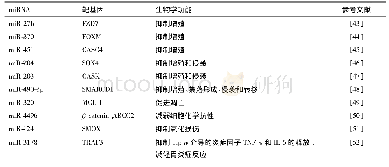《Table 1 IRF3 regulators during virus infection》
 提示:宽带有限、当前游客访问压缩模式
提示:宽带有限、当前游客访问压缩模式
本系列图表出处文件名:随高清版一同展现
《Balancing anti-viral innate immunity and immune homeostasis》
Recent years have witnessed such modes of regulation;for example,miR-NAs have emerged as one of the key players to regulate gene expression by targeting the 3′-untranslated regions(UTR)of mRNA,resulting in degradation via cleavage,translational repression and deadenylation.7Similarly,phosphorylation and ubiquitination are wellcharacterized post-translational modifications that also control the intensity of the immune responses.Moreover,the anti-viral innate immune system is equipped with several molecules to down-regulatethe innate anti-viral response.The downregulation may be caused by direct interactions or posttranslational modifications,such as peptidyl-prolyl isomerase PIN1,FoxO1and TRIM21,which dampen the activation of IRF3(Table 1).8–16Given the vital roles of IRF3 in the expression of an anti-viral state,via the production of pro-inflammatory molecules and type I and III IFNs,research is now focused primarily on identifying novel regulators(positive and negative),with the aim of finding new therapeutic targets during viral infection and combatting several autoimmune diseases.5
| 图表编号 | XD0010733800 严禁用于非法目的 |
|---|---|
| 绘制时间 | 2018.04.01 |
| 作者 | Shalabh Mishra、Himanshu Kumar |
| 绘制单位 | Laboratory of Immunology and Infectious Disease Biology, Department of Biological Sciences,Indian Institute of Science Education and Research(IISER)、Laboratory of Immunology and Infectious Disease Biology, Department of Biological Sciences,Indian Institut |
| 更多格式 | 高清、无水印(增值服务) |
![Table 3Cases of virus infection caused by direct human contact with environmental media[123–318].](http://bookimg.mtoou.info/tubiao/gif/GOCH202010008_02202.gif)
![Table 3Cases of virus infection caused by direct human contact with environmental media[123–318].](http://bookimg.mtoou.info/tubiao/gif/GOCH202010008_02203.gif)



